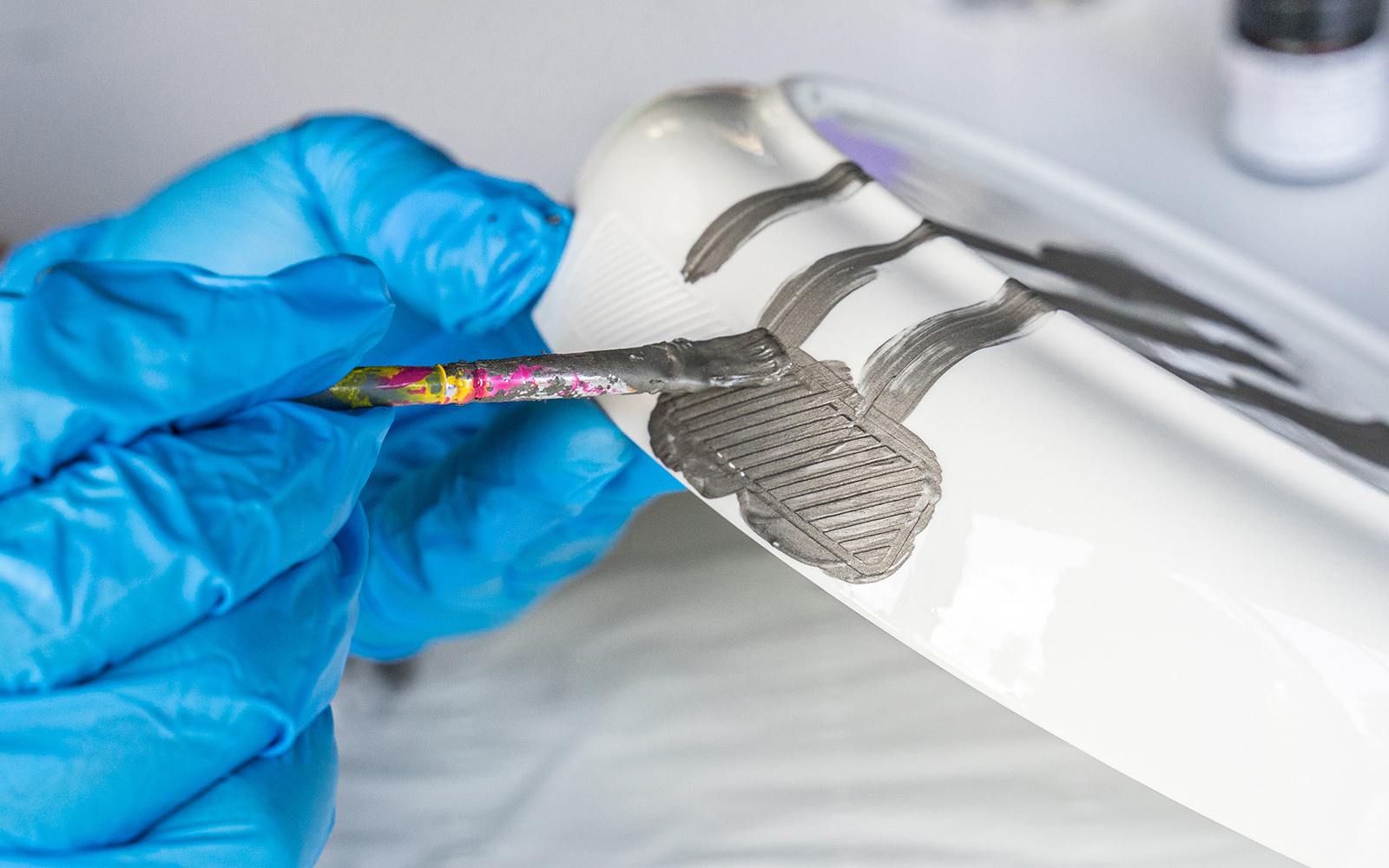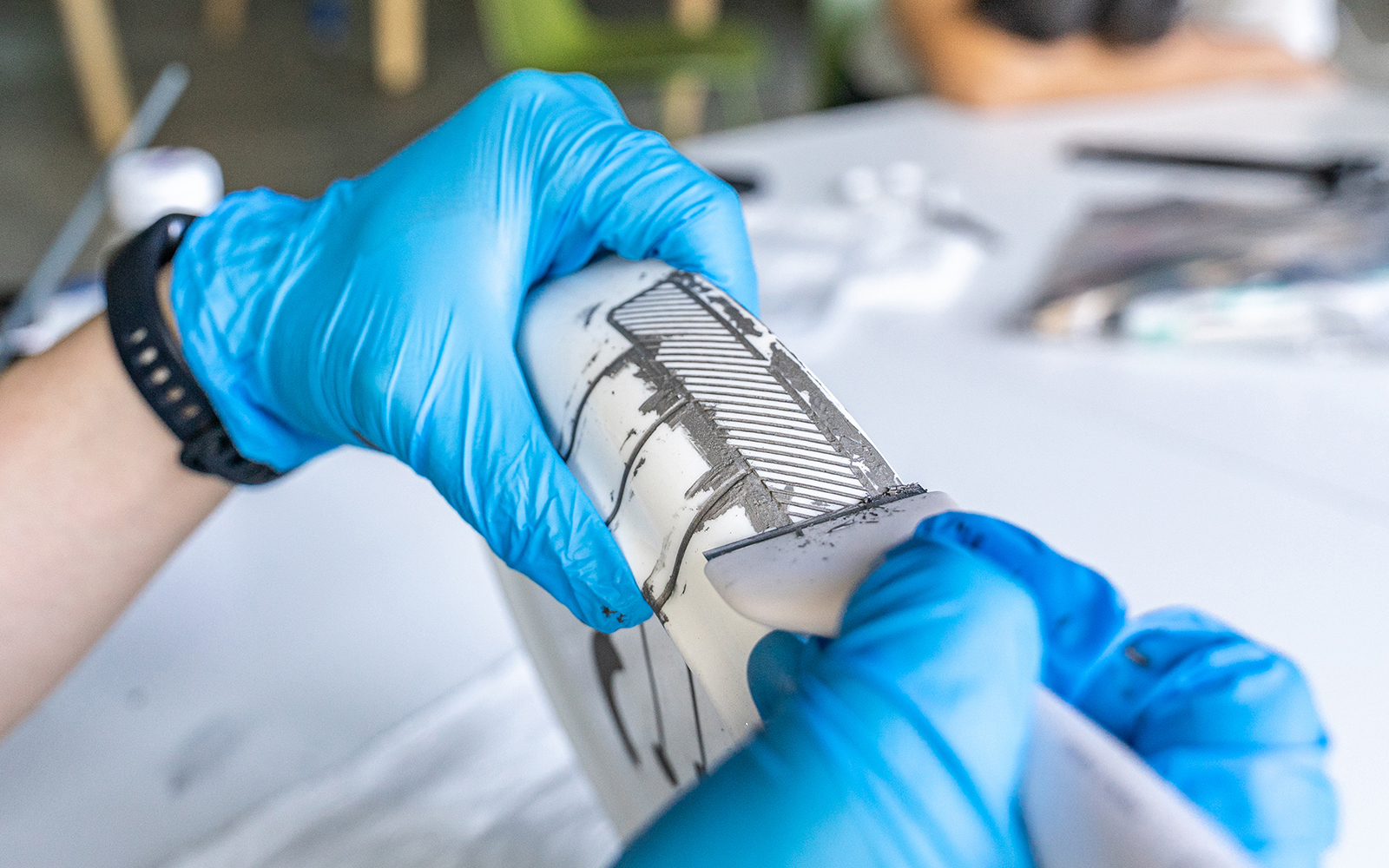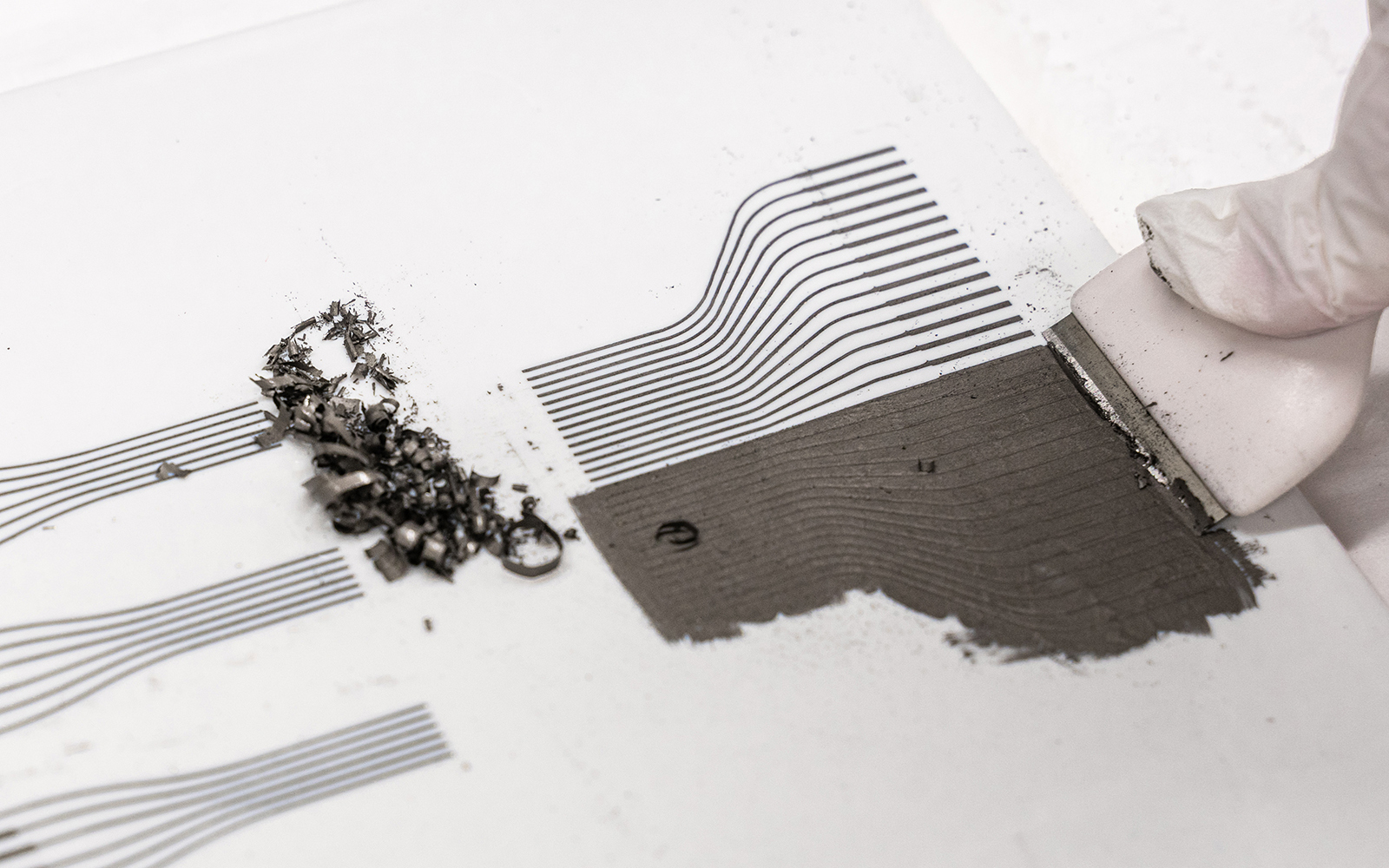Crafting Ceramic Circuits
2023
Glazed ceramic is a versatile material and people use it everyday. Humans have long harnessed this material and its many qualities to make practical and decorative objects—from dining and kitchen ware, to home and architectural fixtures. Rather than develop new electronic devices, what if we could use these everyday ceramic objects as computational interfaces?
In this research, we propose an approach to integrate interactive circuits into existing glazed ceramic objects. This approach was developed in collaboration with Hans Tan, a designer who works with porcelain objects and sandblasting to express themes around Singapore’s heritage. We adapted his technique of “resist-blasting” to selectively remove glaze from a ceramic object with a vinyl mask, revealing the rough texture beneath. We then paint conductive ink onto the object and scrape excess ink off to reveal the conductive traces defined by the masked pattern.
Using this approach, we demonstrate a variety of functional interactive circuits, including touch sensing table ware, temperature sensing tiles, and moisture sensing planters. We also used this approach to apply heating elements directly onto dining vessels.
︎︎︎CHI 2023 ︎︎︎PDF

Sandblasting detail →
Sandblasting removes the vitreous glaze, exposing the underlying ceramic.
Sandblasting removes the vitreous glaze, exposing the underlying ceramic.

 Sandblasting masked ceramic object
Sandblasting masked ceramic object
Painting conductive ink

Scraping excess ink
3D inlaid circuits →





Example applications →






